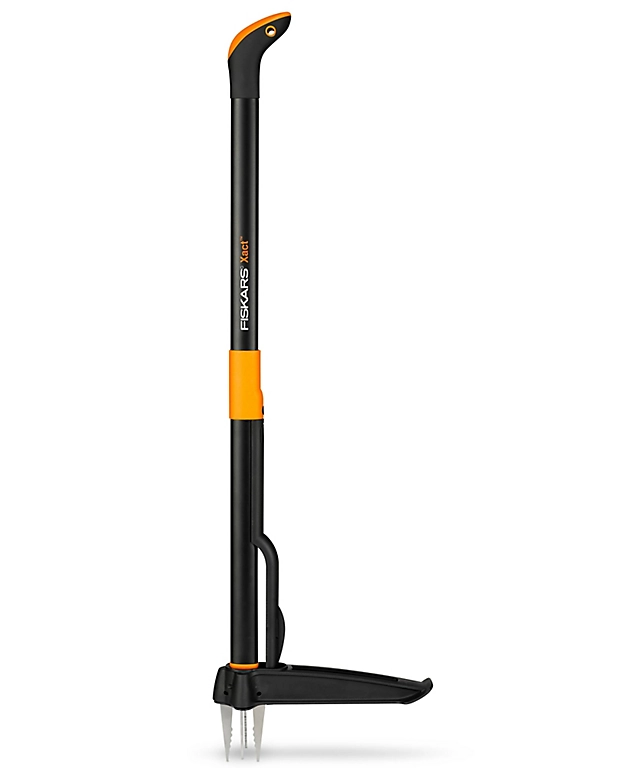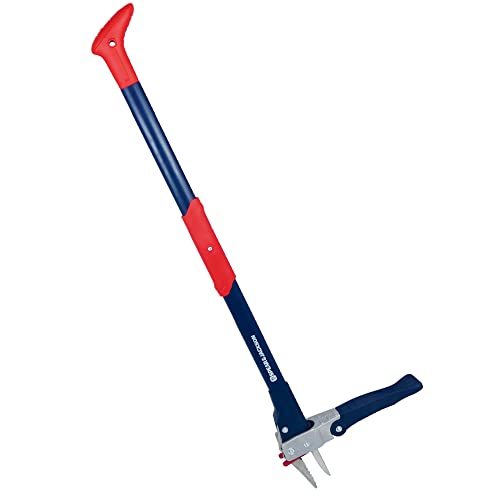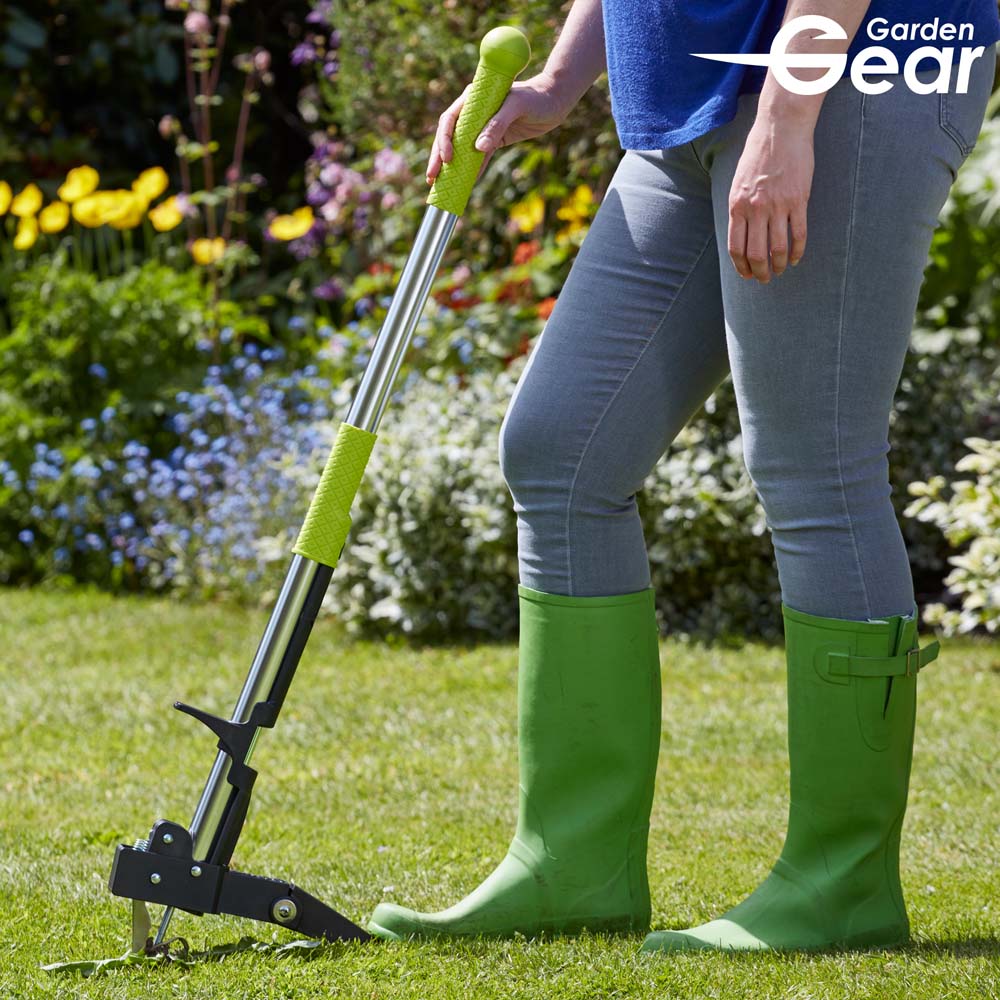How to get rid of weeds on lawns – 6 methods to target infestations without killing your grass in the process
Lawn experts advise on how to prevent weeds from taking hold this summer
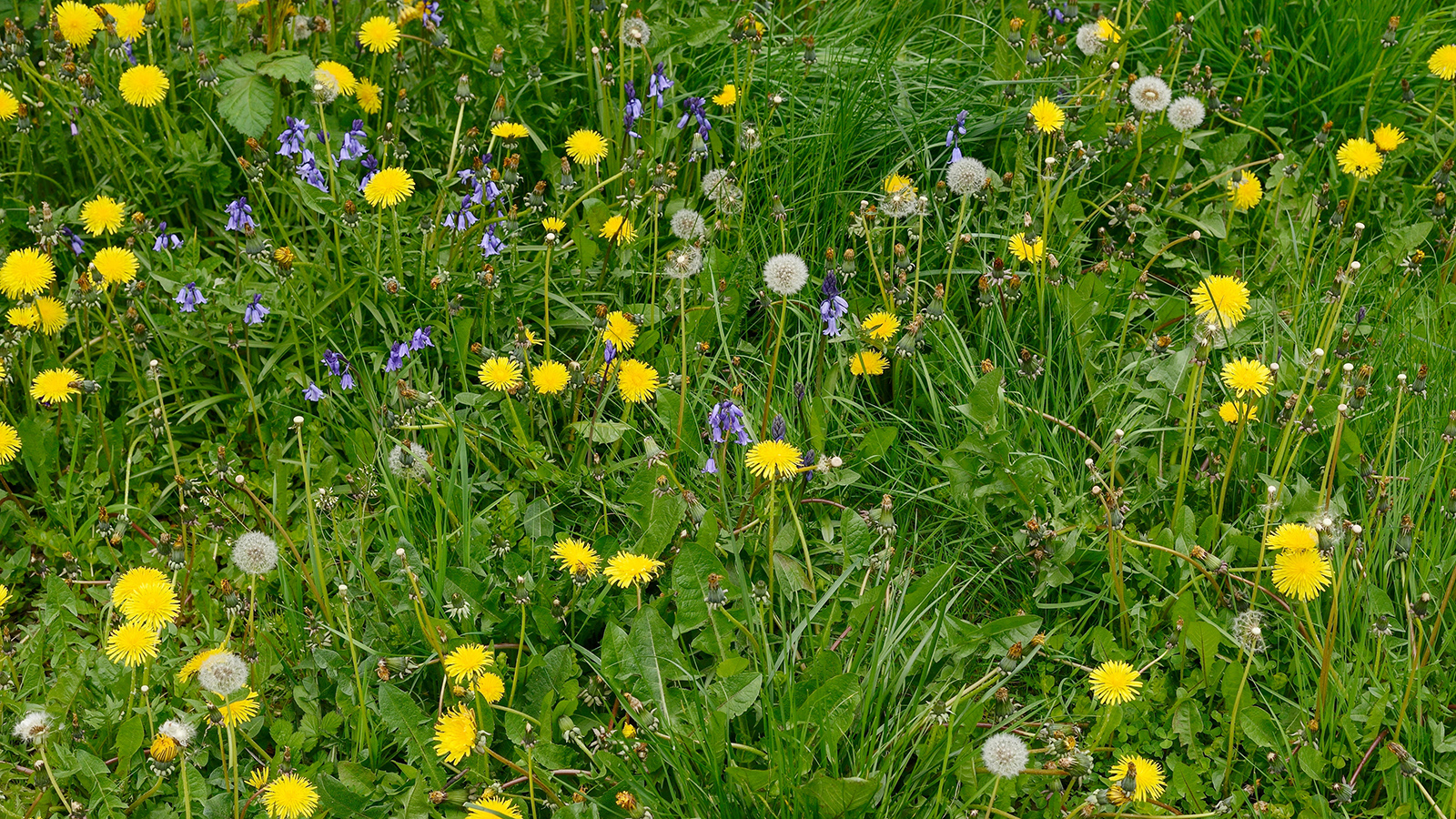
Before you panic about how to get rid of weeds on lawns, it's important to be aware that it's perfectly normal for weeds to crop up now and again in grassy areas, and it's almost impossible to avoid this entirely.
Most weeds are easily dealt with there and then. However, more significant infestations of weeds on your lawn ideas are indicative of a wider issue and can cause long-term problems for your lawn.
Therefore once you've dealt with the weeds, there's the matter of examining your lawn care to prevent the problem from arising again.
How to get rid of weeds on lawns
"Several things can cause weeds to take over your lawn. A neglected lawn can turn weak and thin without regular care, giving weeds a chance to take over. It's easy for weeds to spread through airborne seeds, animals, or even contaminated soil. It's hard to get rid of them once they're established," says Jane Dobbs, a garden expert at Allan's Gardeners.
There are many summer lawn care mistakes which can lead to problems. "When your grass is weak or thin, weeds can easily establish themselves. If the grass isn't fed, watered, or mowed properly, this can happen. When soil is compacted, grassroots struggle to grow, allowing weeds to grow. A compacted soil also keeps water, air, and nutrients from getting to the grass roots," says Jane.
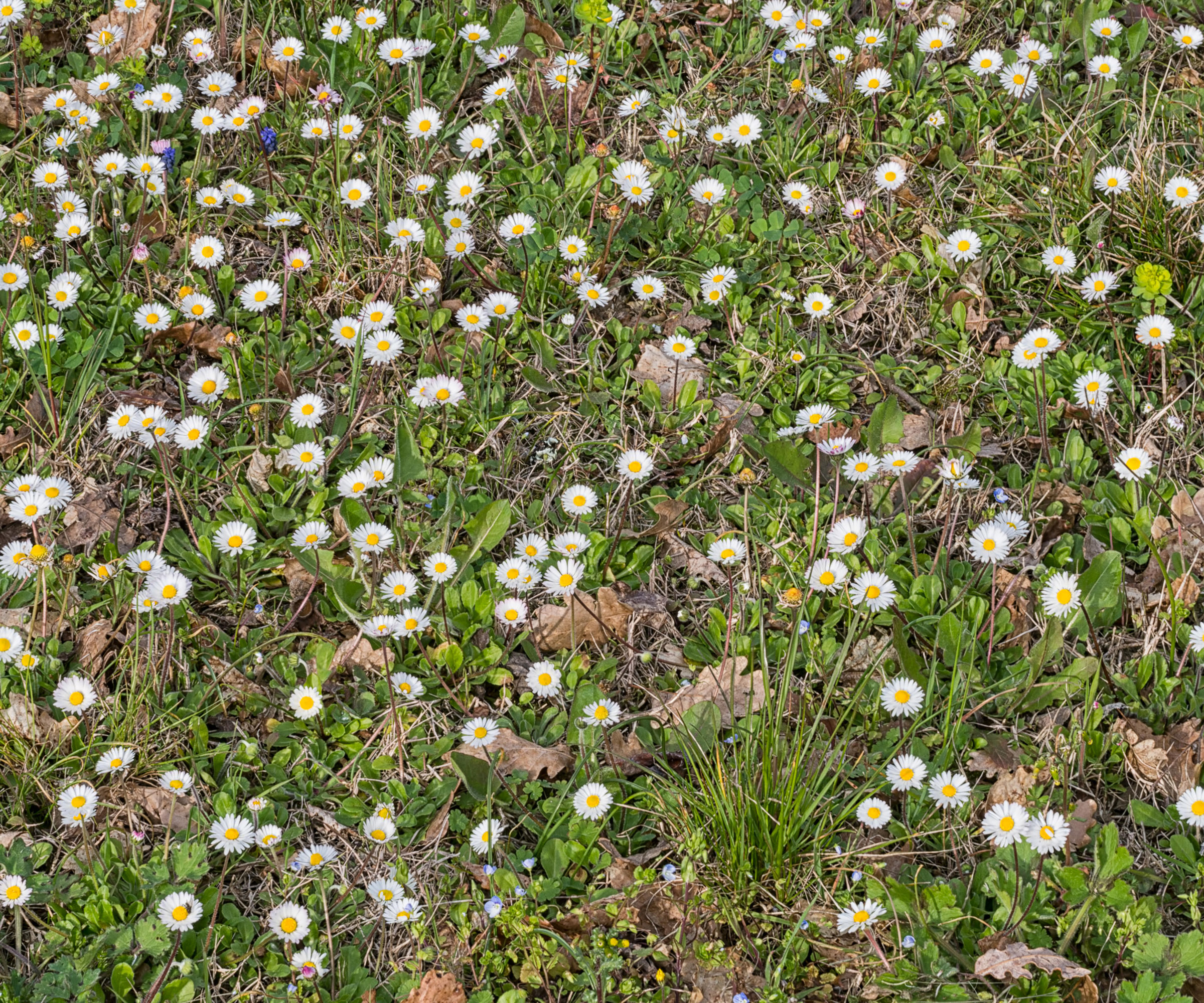
1. Pull up weeds manually
Perennial weeds like dandelions can be dug out or lifted using a clever weed tool. These are designed to make weeding as low-effort as possible by spiking around the weed and ripping up the entire plant and roots in one go. This causes minimal disturbance to the surrounding grass.
However, digging up weeds can leave bare patches in your lawn which provide a space for more weeds to pop up if left unattended. "Make sure you lay turf or reseed as soon as you get rid of the weeds," says Cheryl Harper, Managing Director of Greensleeves.
Bring your dream home to life with expert advice, how to guides and design inspiration. Sign up for our newsletter and get two free tickets to a Homebuilding & Renovating Show near you.
Try Johnson’s Lawn Thickener Lawn Seed at Crocus which is excellent for patching.
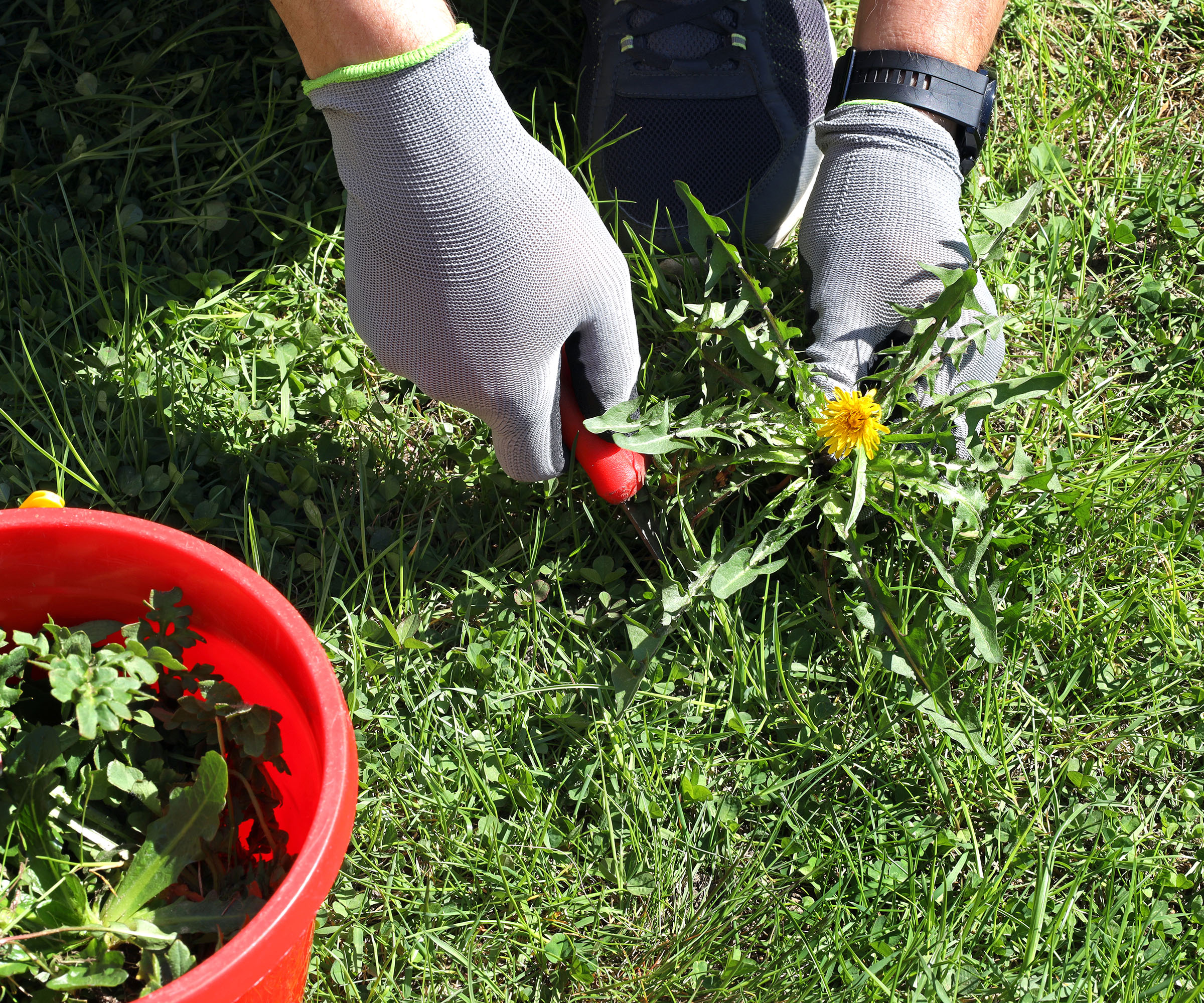
Shop weed pulling tools
2. Apply targeted granular chemicals
Be advised that weed killers such as 'weed and feed' treatments are quick fixes and if the underlying causes of weeds aren't dealt with, the problem will return. If you are set on using chemical methods to get rid of weeds in your lawn however, then be sure that you are using the right product. Never use generic weed killers as these will kill the grass as well.
Combined weed and feed products which also contain chemicals to kill moss in lawns are available. They are granular products which can be applied by hand or using a spreader. Aim for a light and even coverage using the pack's instructions as a guide. Mow your lawn a couple of days before application and do so on a dry day when the soil is partially moist.
Although these products won't kill grass, they may damage other garden plants, so be sure to take measures to protect any spread to your borders.
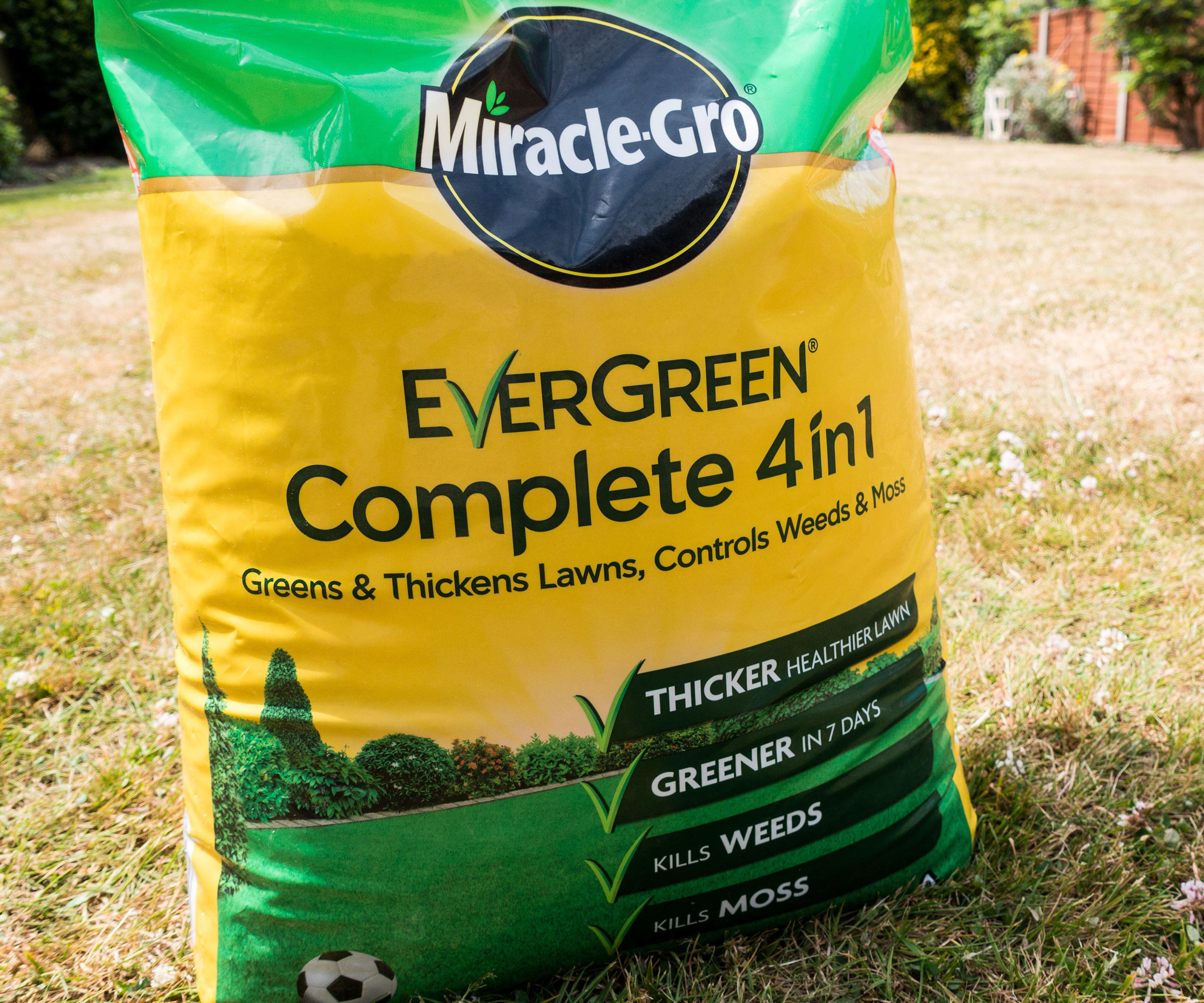
3. Ensure grass is cut at a healthy length
"To maintain a lush lawn and prevent weed re-growth, it’s important not to cut the grass too short," says Paul Hicks from garden and power tools specialist STIHL. "Cutting your grass too short weakens it and lets sunlight reach weed seeds, which encourages them to grow," adds Jane Dobbs.
"Raise the blade height slightly during the summer months (around 25mm) to provide shade for the roots and retain moisture. Lower it a touch (around 20mm) in spring and autumn to encourage thicker growth," advises gardening expert at HomeAdviceGuide.com Oliver Johnson.
Remember to sharpen lawnmower blades to deliver the cleanest and healthiest cut. Lawn mowers which tug on the grass can weaken the roots and leave an environment for weeds to appear.
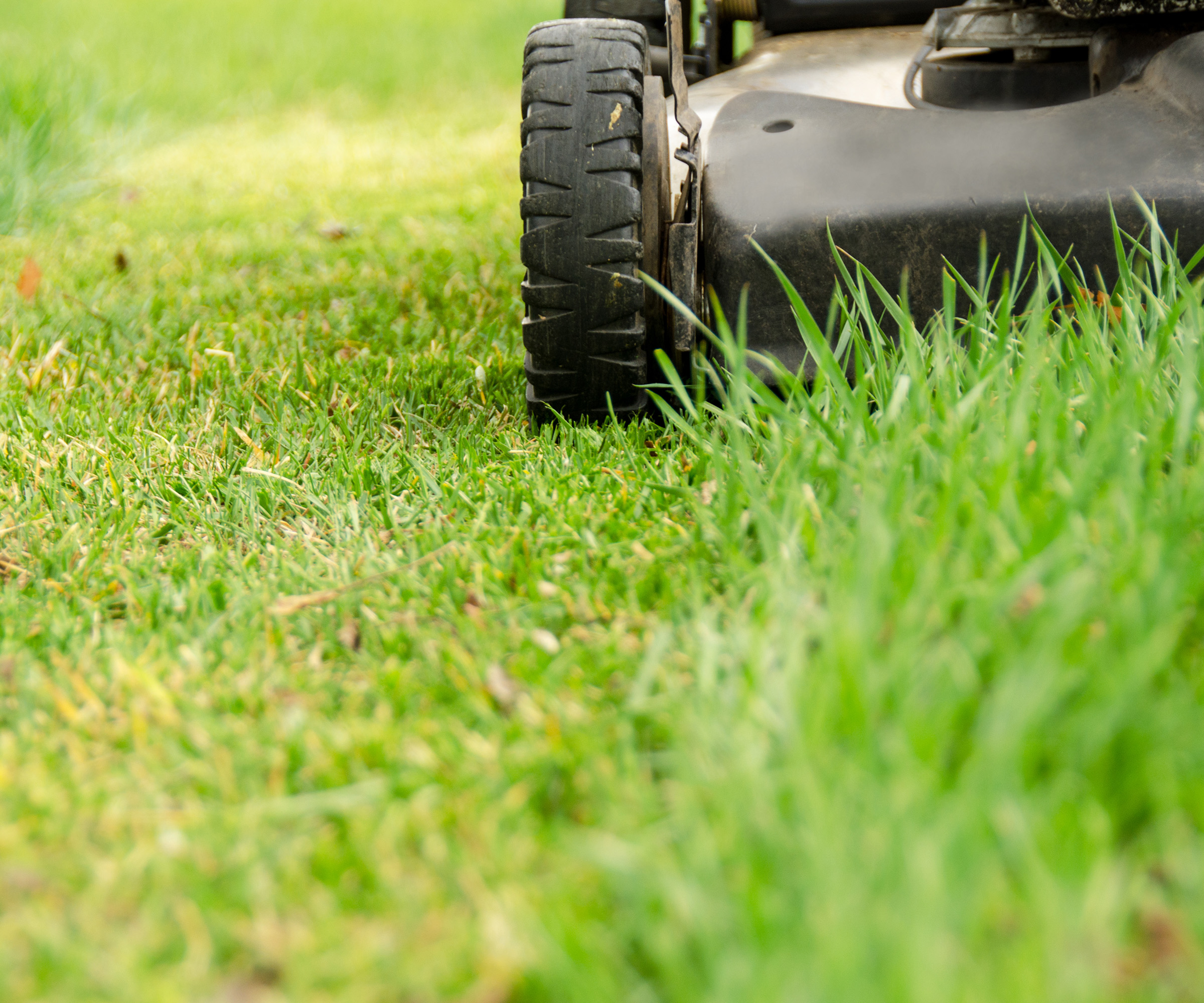
4. Sand your lawn to improve the growing conditions of grass
Using sand on lawns is especially good if you find your lawn plagued with moss. Moss hates sandy soils and lawn sands contain iron sulphates which kill moss and ammonia which feeds grass.
"As sand improves drainage and soil conditions, it does help to boost the health of your grass. Sand with added nitrogen will directly improve grass growth," says garden expert at MyJobQuote, Fiona Jenkins.
Try spreading Westland Lawn Sand Plant feed 200m² 16kg available at B&Q to improve the condition of your lawn and get rid of moss growth, apply between April and May or August and September.
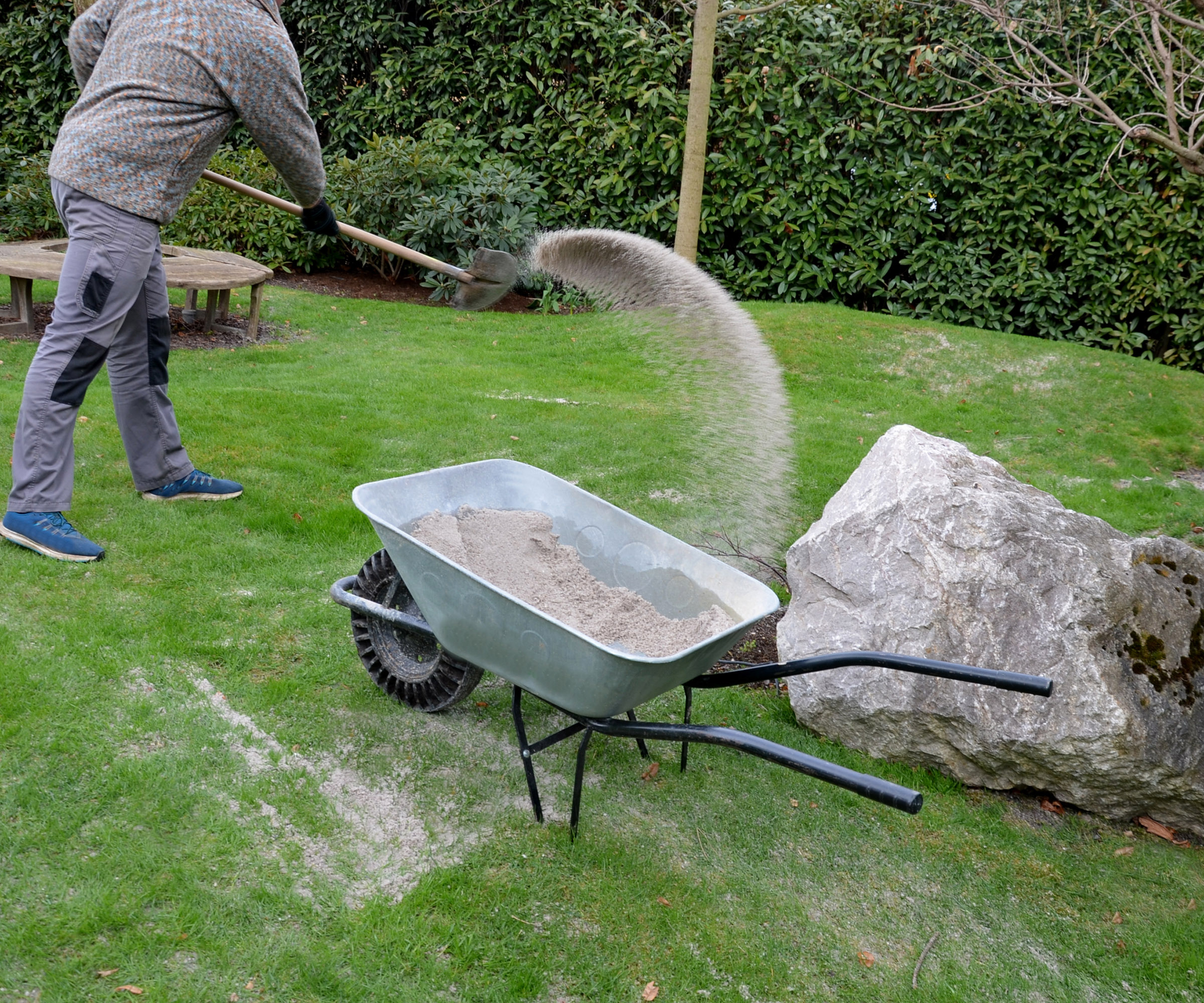
5. Embrace nature and leave them be
The Lawn Association in the UK is a strong advocate for chemical-free approaches to lawn care. "The truth is, weeds have a place in a healthy lawn. But the harmful chemicals used to eradicate them do not," says the Chairman of the Lawn Association, David Hedges Gower.
"It's time to embrace a more natural approach that respects the balance of nature and eliminates unnecessary damage to both our lawns and the environment."
Common lawn weeds to look out for are dandelions, daisies, creeping buttercups and clover. Some gardeners may not see the problem with these perennial wildflower weeds and may choose to leave them in place.
Graham Smith MClhort, a gardening expert from LBS Horticulture, reminds us that the more plants you have growing in your lawn, the more biodiverse it will be. "Some weeds also produce flowers, such as dandelions, that will attract pollinators to your garden and allowing these to grow will make your garden more wildlife-friendly."

Graham has extensive knowledge in the horticultural and gardening industries, and prides himself on using this to help gardeners of all skills create their perfect outdoor space.
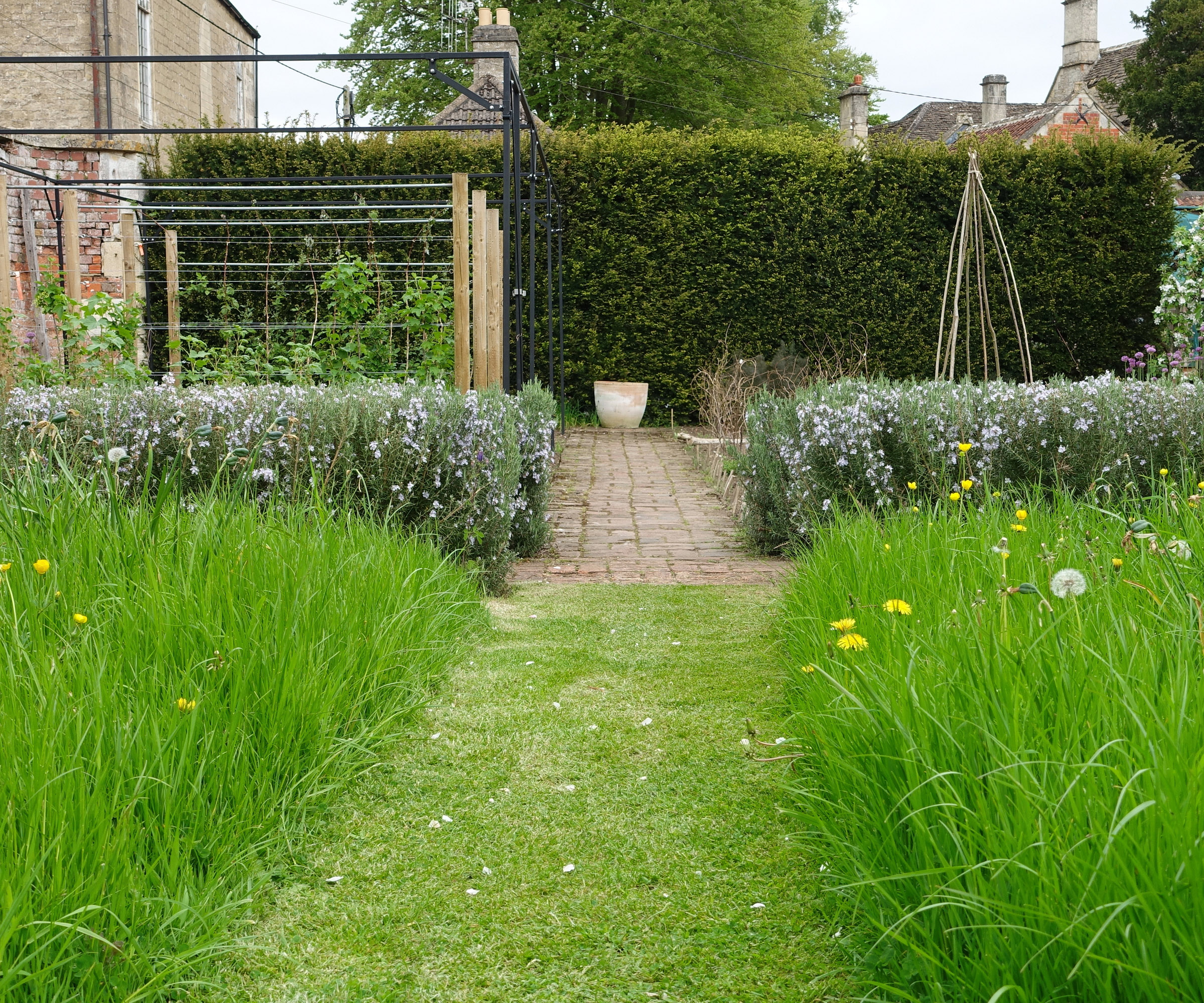
6. Maintain a healthy lawn to keep weeds at bay
"It takes consistent care and some preventative measures to keep weeds out of your lawn. A healthy lawn, properly mowed, watered, and fertilised, will naturally suppress weed growth. Keep your lawn mowed at the right height for your grass type. Grass that's taller shades the soil, making it harder for weeds to grow," says Jane Dobbs.
"Water your lawn deeply but less often so your roots grow deep. This makes the grass more competitive against weeds. I don't recommend shallow watering, which encourages weak grass and weeds."
"The best way to keep your lawn healthy is to aerate it once a year to relieve soil compaction, improve drainage, and let nutrients reach the roots. A healthy soil supports stronger grass, which beats weeds. Add mulch to bare spots or garden beds to stop weeds from growing. By blocking sunlight, mulch helps keep weeds at bay.
"Watch out for new weeds and get rid of them right away. It's easiest to stop weeds from spreading by spot-treating them," says Jane.

Responsible for leading the gardening team at Allan's Gardeners, a landscaping and garden maintenance, business who undertake lawn care and installation. She has 10 years experience as a gardener.
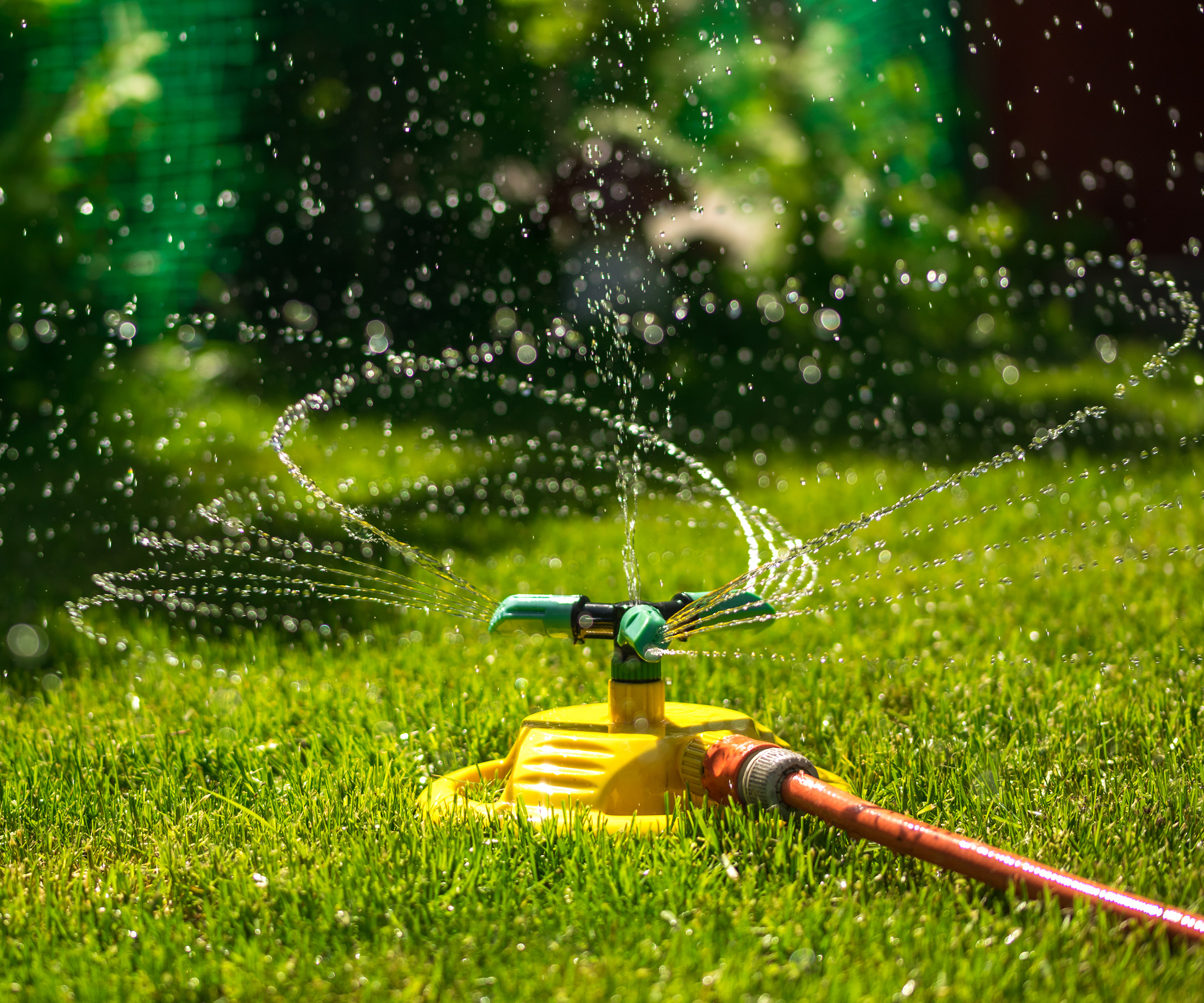
FAQs
Why is my lawn full of weeds?
"There are several reasons why there can be a lot of weeds present in your lawn," says Graham Smith MClhort, a gardening expert from LBS Horticulture.
He outlines the main causes below:
- Improper mowing: Mowing the lawn incorrectly can weaken it and create the ideal conditions for weeds to grow. If you mow the lawn too short or scalp the edges, this creates favourable conditions for certain weeds that will pop up in thinned-out areas.
- Underwatering: Weeds can easily take advantage of a lawn that is struggling due to drought or underwatering, as these conditions mean that the lawn will not be able to grow thick and healthy.
- Soil health: If the soil health of your lawn is struggling, this can also affect the amount of weeds that will grow in your lawn. If the soil is healthy, your lawn will be able to use the nutrients found within it. Similarly, soil pH can impact the amount of weeds that you will find in your lawn, as healthy grass may not grow as well in lower pH soils but weeds may actually prefer it.
- Compacted soil: It is difficult for healthy grass to grow in compacted soil, whereas some weeds have adapted to be able to grow in these conditions. Compacted soil can also make it harder for lawn care products to penetrate the surface and reduce their effectiveness. Aerate a lawn regularly to help.
- Too much shade: If a lawn does not receive enough sunlight, it is unlikely that it will grow to be healthy. Grass needs at least five hours of sunlight a day to grow, compared to many weeds that can grow in shaded areas.
- Diseases or pests: If your lawn is already struggling due to a problem involving diseases or pests, this can make it easier for weeds to take over.
How do I fix my grass full of weeds?
"To prevent weeds in your grass, try to keep on top of regular lawn maintenance that will keep your lawn healthy, such as aerating, scarifying and feeding. Regularly reseed or returf bare patches before weeds can begin to sprout, and avoid mowing the lawn too short," says Graham Smith MClhort, a gardening expert from LBS Horticulture.
"If you have flowering weeds present within the lawn, deadheading these can prevent them from self-seeding, or mow the lawn often if you have a larger garden," he adds.
How do I kill weeds in my lawn without killing the grass?
"There are ways to kill weeds without harming your grass," says Jane Dobbs, a gardening expert at Allan's Gardeners.
She highlights the various methods below:
- Selective herbicides: These target broadleaf weeds like dandelions and clover without harming grass. Pick a herbicide that's safe for your grass type.
- Removing by hand: If you have small patches of weeds, you can pull them out by hand, including the roots. It's best to do this when the soil is moist.
- Corn gluten meal: When used as a pre-emergent herbicide, corn gluten meal can prevent weed seeds from germinating. Although it won't harm established grass, it should be applied before weed seeds sprout.
- Targeted weed killer: Apply weed killer directly to the weeds with a spray bottle. Herbicide won't spread to surrounding grass this way. Be aware that chemicals can harm wildlife and other plants, as well as leave bare patches in your lawn where more weeds can crop up.
- Vinegar: A solution of white vinegar, water, and dish soap can kill weeds. On a sunny day, spray it directly on the weeds. This can harm grass, however, if it comes into contact with it.
If weeds are present beyond your grass areas and have cropped up in other parts of your garden you may find our guide on how to remove weeds from gravel useful.

Teresa was part of a team that launched Easy Gardens in 2018 and worked as the Editor on this magazine. She has extensive experience writing and editing content on gardens and landscaping on brands such as Homes & Gardens, Country Homes & Interiors and Living Etc magazine. She has developed close working relationships with top landscape architects and leading industry experts, and has been exposed to an array of rich content and expertise.
In 2020 Teresa bought her first home. She and her partner worked alongside architects and builders to transform the downstairs area of her two bedroom Victorian house in north London into a usable space for her family. Along the way she learned the stresses, woes and joys of home renovation, and is now looking to her next project, landscaping the back garden.
